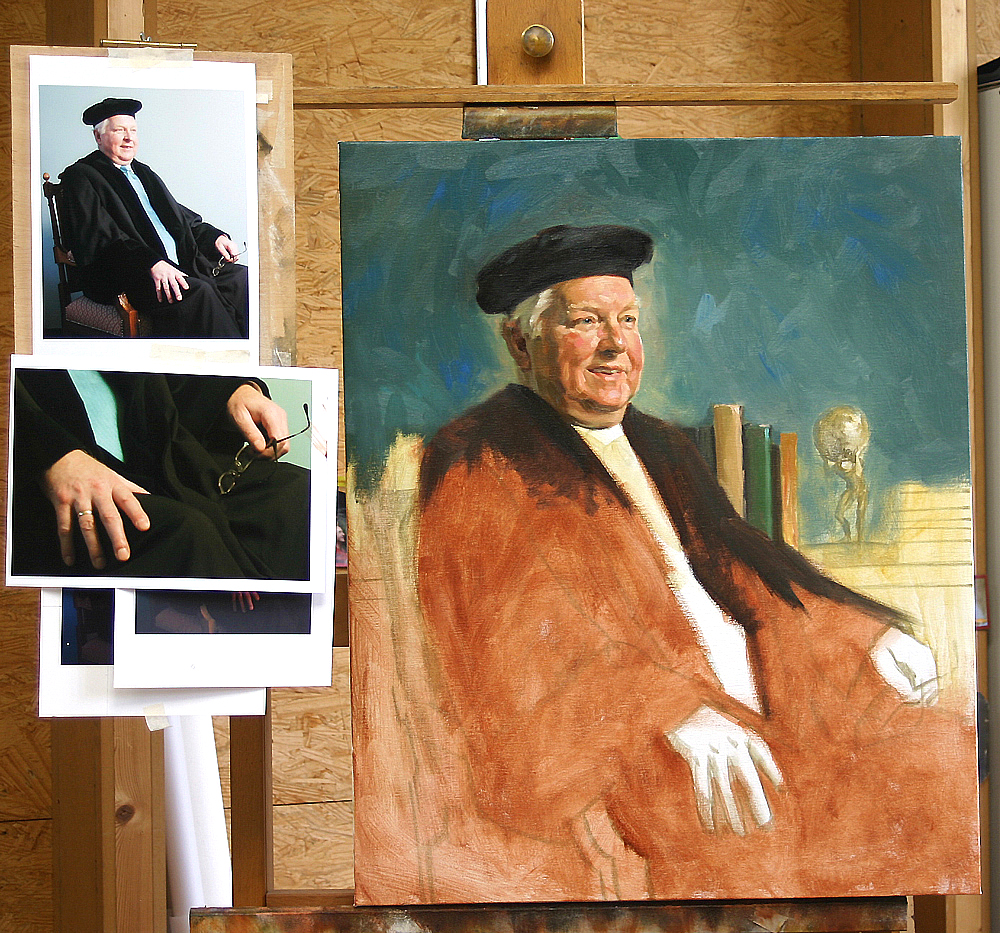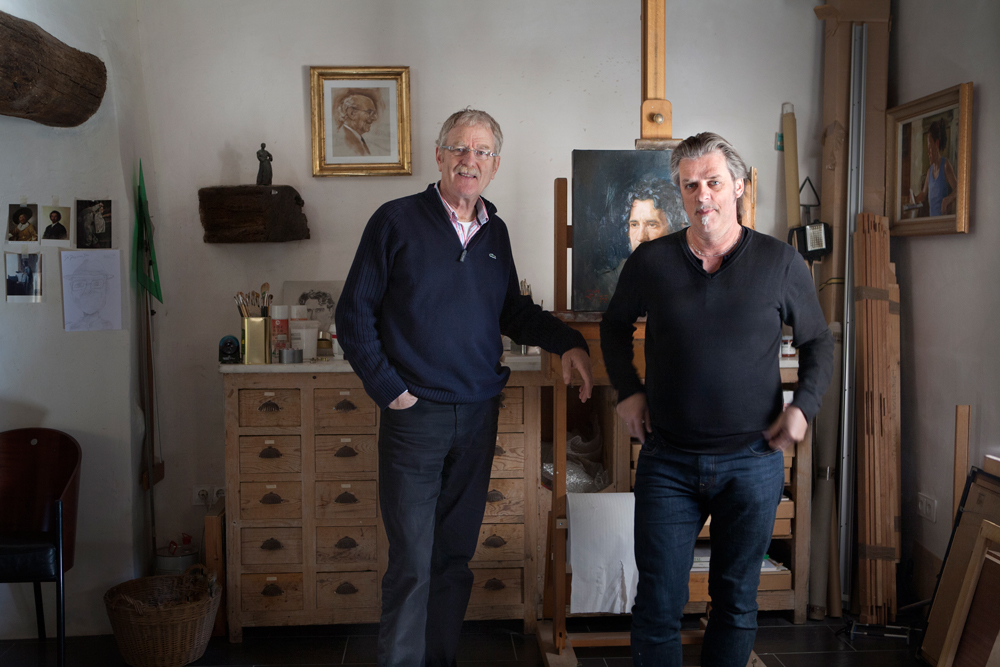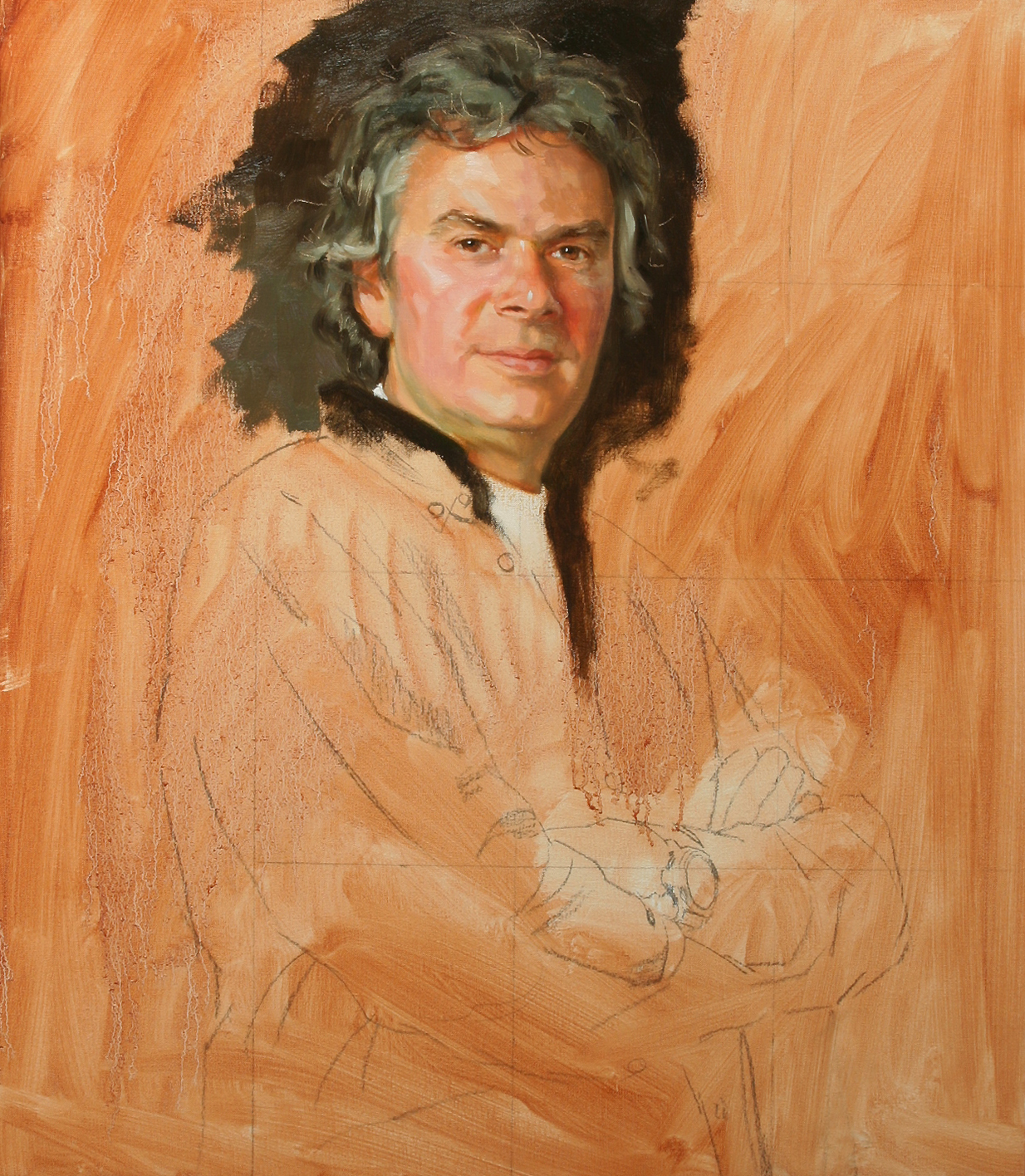You learn the most from your own mistakes, I’ve mentioned this before. “But how does that work?” you might ask. Sometimes you know that your painting is unsuccessful but you do not know why. In the beginning, that was also a problem for me. Perhaps the most important thing I taught myself is this: Make a checklist to be used after finishing a painting. (Applause from family and friends is trappy: It’s not hard to get compliments and believe that you’ve done an amazing job when you actually should know better.)
Some criteria that you can think of:
- Is the composition solid enough?
- Is the value contrast okay?
- Is the use of colour okay?
- Did I use enough paint?
- Do I see enough “bold” brush strokes?
- Not too many meticulous & irrelevant details?
There are numerous points to invent. Later I’ll come back to this issue. Try to make such a list for yourself.
An important observation is this: Value contrast can be more important than colour contrast. When a painting is not really a hit because you got stuck in colours that don’t want to accomodate, remember that the solution perhaps lies in the value contrast.

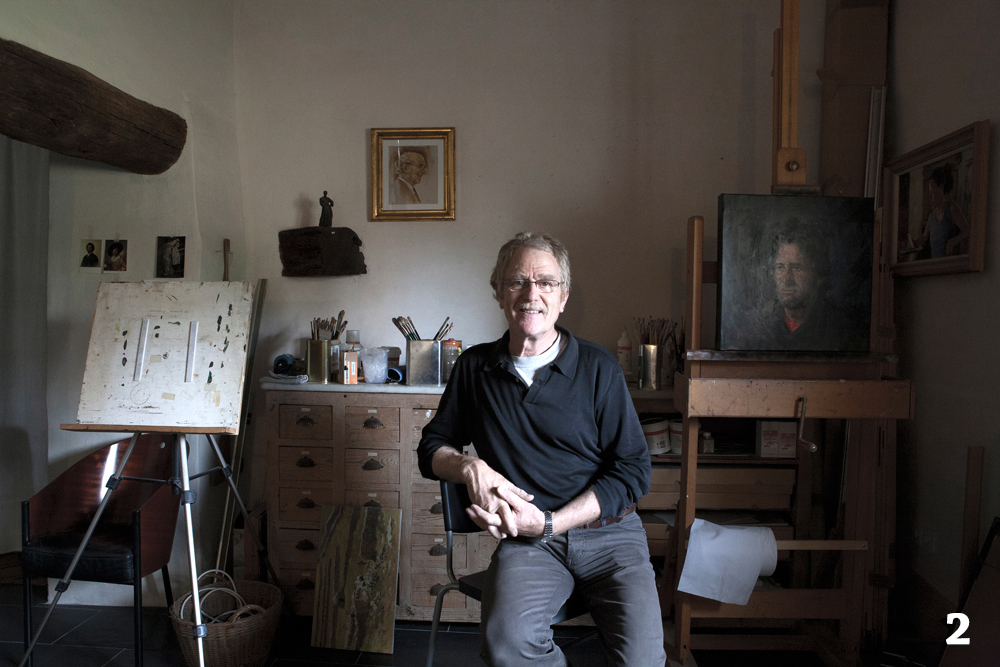
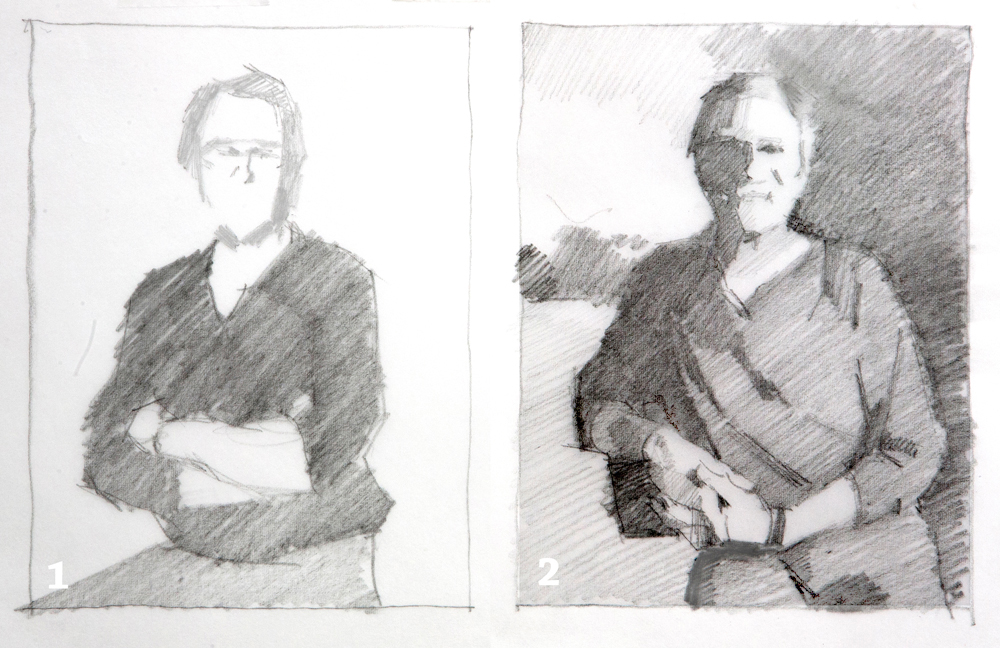
I made two images with the self-timer in my studio. On the first the light source is right in front of me. On the second from aside. I transformed the two into a simple grayscale drawing. In the first drawing the portrait has to come alive from subtle colour contrasts. In image 2, the face is completely formed by the strong shadow. Drawing 2 has a higher value contrast and that makes it much easier to achieve a strong portrait and to obtain a good likeness. See also this article.






